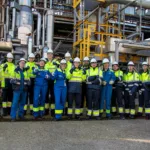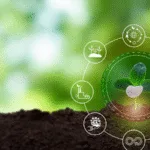Chemical industry snapshot
A growing and efficient industry
Denmark’s chemical industry consists of a few large chemical producers specializing in catalyzers, pesticides and crude tar. Besides that, the industry consists of manufacturers of paint, glue and detergents, and companies delivering raw materials to the very large pharmaindustry. Denmark’s chemical industry recorded sales of approximately €6.6 billion in 2021, an increase of approximately 7.2 % since 2017, forming 5.7 % of the national industrial output.
Thanks to its high productivity and efficiency, its workforce is 4.2% of the manufacturing total.
Employment levels
In 2020, the total employment in the Danish chemical industry was 11.209 people and 303 companies. The workforce consists of 38% women and 62% men in this sector.
GDP
In total Denmark had a GDP growth of 4,9% in 2021. The growth in GDP increased through 2021 from index 104 to 110 from January to December (1st Quarter 2017=100). The growth was predominantly driven by economic activity in the industries industry and trade and transport etc.
How are we doing?
Strengths
- High level of innovation
- Excellence on safety
- Strong environmental protection
- Well-educated workforce
- Outstanding quality
Challenges
- Negative perceptions of the chemical industry and a tendency to supplement EU laws with national legislation
- High energy taxes
- State bureaucracy: obtaining consent to develop new or existing chemical production sites is difficult
- High labour costs
- Lack of competitiveness compared to Asia and other countries
Our contribution to a competitive Europe
The Danish economy proved relatively resilient to the pandemic-related challenges in 2020 and 2021. The start of 2022 showed an increase in production and employment in general. The economy has been expanding at a strong pace following the total lift of pandemic-related restrictions and the achievement of high vaccination rates.
80 per cent of the population is vaccinated today against covid-19 and the Danish economy has quickly returned to a boom with high employment and low unemployment. More people than ever before have a job, and the unemployment rate was the lowest in 12 years by the end of 2021. Low unemployment and many vacancies indicate a tight labor market. Overall, the GDP was forecasted to grow by 4.3% in 2021 and ended at 4.9%. The foresight for the GDP is a growth of 2.8 per cent in 2022 and a decrease in 2023. However, the course of the Danish economy is uncertain with global supply problems and high inflation rates.














